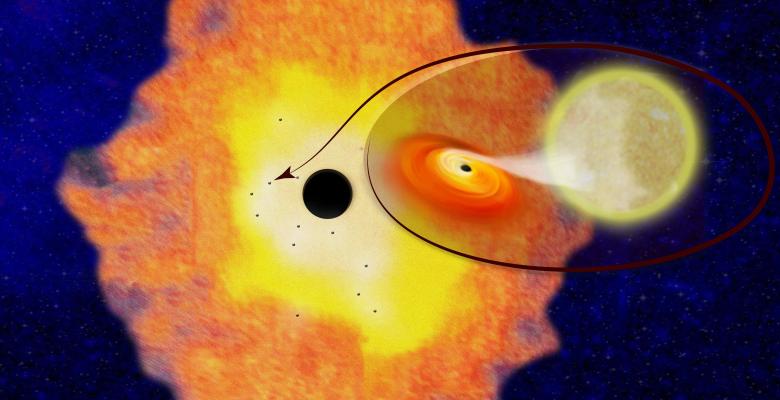After a decades-long search, the first evidence for a vast population of black holes inhabiting the core regions of the Milky Way Galaxy has emerged. Astronomers had theorized that in addition to a single supermassive black hole, the Galactic center likely harbors thousands of smaller black holes. Derived from the demise of colossal stars, these "stellar" black holes should readily develop due to the rich stores of star-forming material in the Milky Way's core. The migration of black holes originating from farther out in the galaxy, drawn by the supermassive black hole's gravity, should further boost this theorized population's numbers. See also: Astronomy; Black hole; Galaxy; Gravitation; Mass; Milky Way Galaxy; Star; Stellar evolution; Stellar population; Supergiant star; Supermassive black holes

The black holes had previously eluded researchers because—true to their name—most of these objects are invisible, neither emitting electromagnetic radiation on their own nor interacting with other matter to produce detectable light. Yet some black holes should end up in gravitationally bound systems with stars. In these binary systems, the black holes can pull matter from their stellar companions. This matter accelerates and emits high-energy radiation, such as X-rays. Using observations from the Chandra X-ray Observatory, researchers searched for such a signature, which, at the tremendous distances between the Sun's vicinity and the Galactic core, is subtle. Parsing 12 years’ worth of data, however, revealed a dozen black-hole, binary-system candidates within three light-years of the Milky Way's supermassive black hole. See also: Chandra X-ray Observatory; Electromagnetic radiation; Electromagnetism; Light; Light-year
Based on this discovery, astronomers extrapolate that between 300 and 500 similar X-ray binary systems orbit the Galactic core, joined by roughly 10,000 singleton, quiescent black holes—all in remarkable agreement with prevailing theories. If, indeed, this long-sought black population has been uncovered, studying it further could yield key insights into related fields. One is gravitational wave research. Ripples in spacetime, gravitational waves were directly detected for the first time in 2015 by the Laser Interferometer Gravitational-Wave Observatory (LIGO). Pinning down the number of black holes in the Milky Way's center could inform how often black holes might merge, spawning gravitational waves there as well as in other galaxies. See also: Gravitational radiation; LIGO (Laser Interferometer Gravitational-wave Observatory); Spacetime





